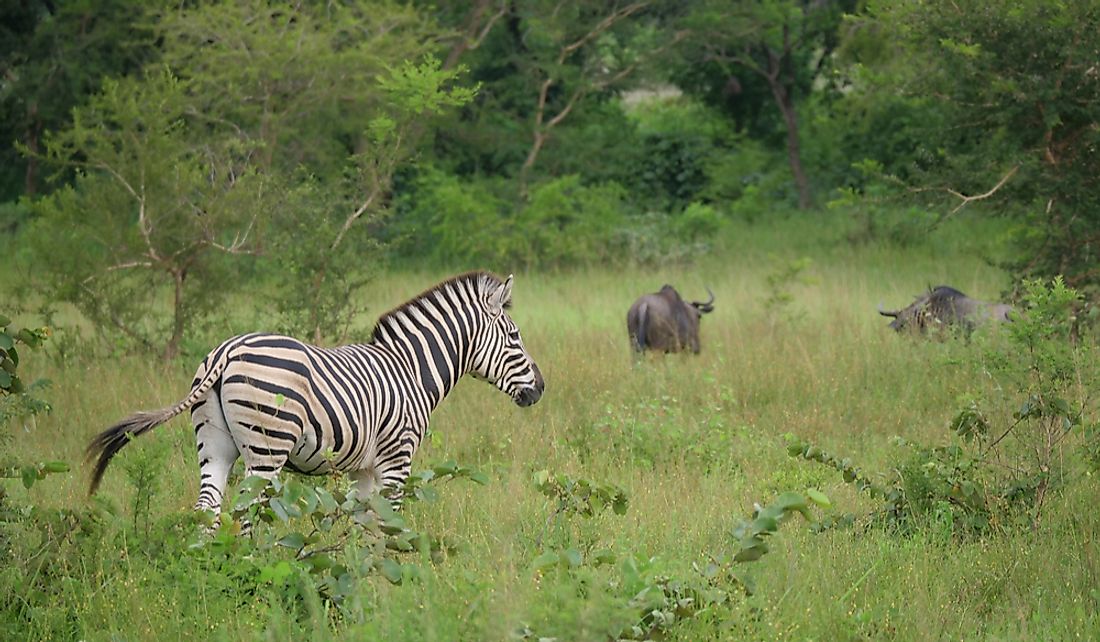The Three National Parks Of Togo

Togo is a nation in West Africa that occupies an area of 57,000 km2, making it one of the continent’s smallest countries. Despite its small size, Togo has a varied landscape, which includes sandy beaches and lagoons along the coast, rolling savanna in the north, hills in the center, and a savanna and woodland plateau in the southern part of the country. Togo experiences a climate that is generally tropical in nature. The country's diverse landscape creates habitats for numerous species of flora and fauna. However, mismanagement of protected areas due to lack of funding, low levels of awareness about wildlife conservation, and poor economic conditions in local communities threaten Togo's wildlife. Additionally, poaching is rampant in many parts of the country, and forests are destroyed often without consequences. However, Togo's three national parks help protect and preserve its biodiversity.
3. Fazao Malfakassa National Park
Fazao Malfakassa National Park is the largest national park in Togo, encompassing the country's Centrale Region and Kara Region. The park was founded in 1975, through the merger of two reserve forests, Fazao and Malfakassa, creating a 1,920 km2 national park, the largest of its kind in Togo. The park's landscape consists of a semi-mountainous wetland habitat that supports a great diversity of wildlife. In addition to a population of elephants and at least 244 species of birds, the park contains several species of antelope, including the bushbuck, red-flanked duiker, waterbuck, roan antelope, western hartebeest, and grey duiker. Historically, elephant poaching was a major issue in the area, but has been largely controlled, with help of the CITES (Convention on International Trade in Endangered Species of Wild Fauna and Flora) Monitoring of Illegal Killing of Elephants Program. Fazao Malfakassa National Park was also added to the UNESCO World Heritage Tentative List in 2002.
2. Fosse aux Lions National Park
Fosse aux Lions National Park is a national park located in northern Togo’s Savanes Region. Initially established as a reserve forest in 1954, the park encompasses an area of approximately 16.5 km2 and its status was later upgraded to national park. Although Fosse aux Lions National Park contained a significant African elephant population in the 1970s and 1980s, its population within the park has been nearly wiped out.
1. Oti-Kéran National Park
Oti-Kéran National Park is a national park located in northern Togo’s Kara area. The size of the national park has been expanded significantly since the 1960s, but its growth has resulted in serious social problems. For example, the park's expansion displaced local populations, who were not compensated for the loss of their agricultural lands, leading to widespread poverty and unemployment. Additionally, wildlife, especially elephants, venturing beyond the unfenced protected areas were known to destroy crops in the surrounding communities. When Togo experienced political turmoil in the 1990s, certain local populations, which had grown opposed to the protected areas, destroyed the park and mass-slaughtered animals. However, the park's boundaries were reformed in 1999, and its area was decreased from 179,550 hectares to 69,000 hectares. More recently, significant investments have been made in the development of ecotourism within the region. Today, Oti-Kéran National Park contains small populations of African elephant, waterbuck, duikers, African buffalo, hippopotamus, lions, and monkeys. Additionally, approximately 214 species of birds have been recorded in the park, including the black-crowned crane, bearded barbet, lavender waxbill, Goliath heron, violet turaco, and splendid sunbird. The West African crocodile also inhabits the park’s waters.







